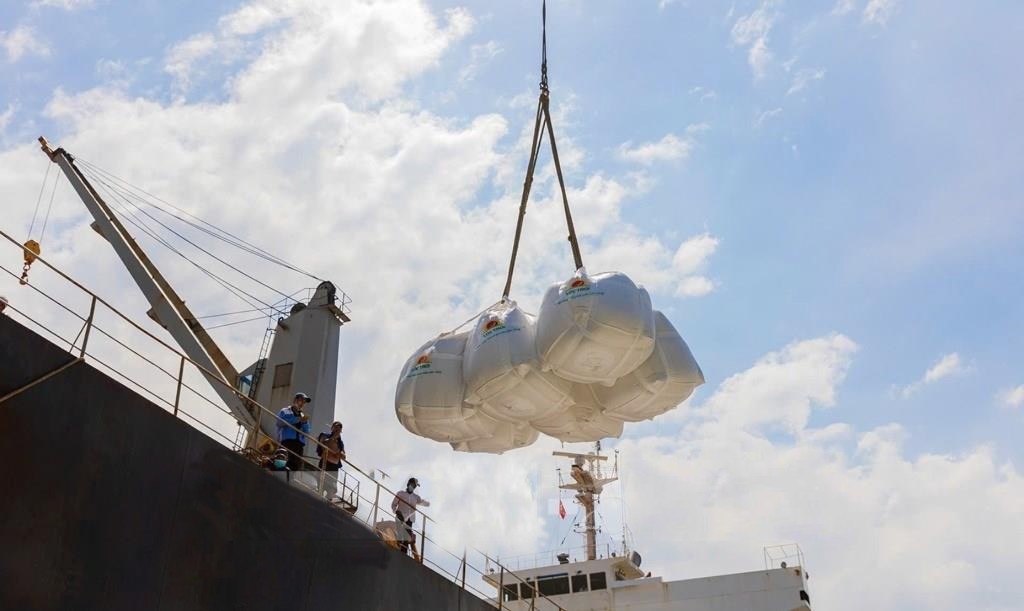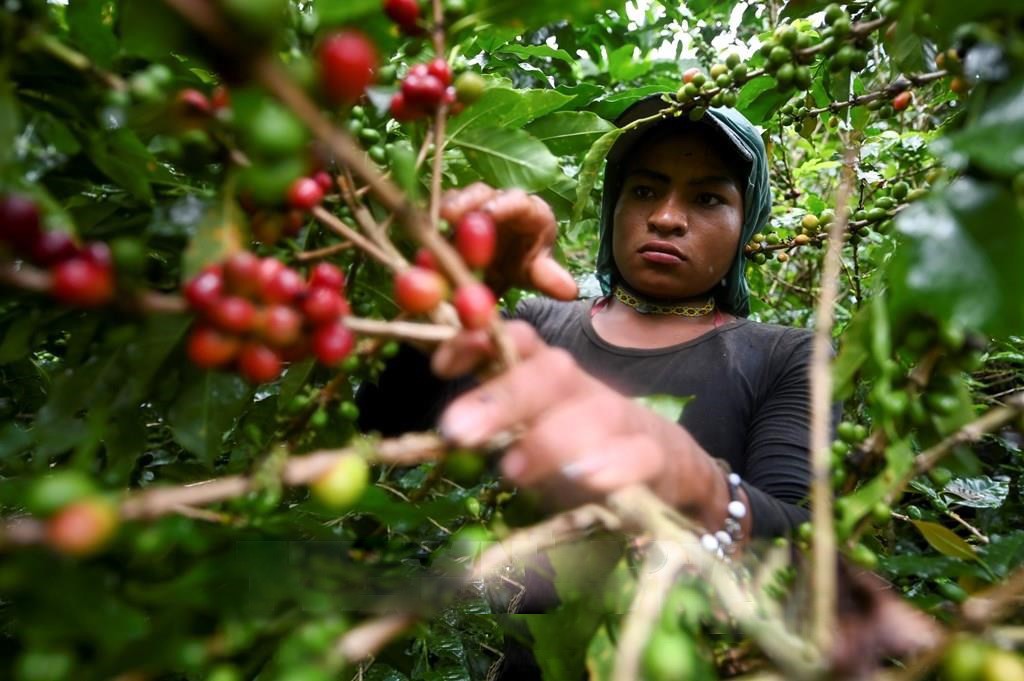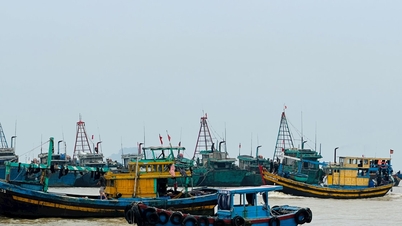
US agricultural market
At the Chicago Board of Trade (CBOT), soybean prices remained unchanged at $9.89/bushel at the close of August 1, but still recorded a decrease of about 3.1% for the week, marking the second consecutive week of decline. The main reasons were abundant global supply, favorable weather in the US and weak demand from China continuing to put pressure on the market (1 bushel of wheat/soybean = 27.2 kg; 1 bushel of corn = 25.4 kg).
U.S. farmers are expected to reap bumper soybean and corn crops this fall thanks to favorable weather conditions, but they are concerned that President Donald Trump’s latest wave of tariffs could hurt U.S. agricultural exports, given the recent slump in soybean and wheat sales.
The US is facing stiff competition from Brazil – the world’s largest soybean exporter – in the global market. Analysts at BMI, a subsidiary of consultancy Fitch Solutions, said: “The US is expected to have a good crop, with Brazil’s soybean production hitting a record for the second consecutive year, which will continue to put downward pressure on soybean prices for the rest of the year.”
China, the world’s largest soybean importer, faces an August 12 deadline to reach a tariff deal with the Trump administration. The US believes the two sides are close to a deal, but it is “not yet complete”, according to US Treasury Secretary Scott Bessent.
A Chinese importer signed a contract to buy 30,000 tonnes of soybeans from Argentina last week, two industry sources said, as feed producers seek cheaper supplies from South America.
Wheat for September 2025 delivery fell 6 cents to $5.16 a bushel on Friday, ending the week down 4% on new supplies from the Northern Hemisphere harvest.
CBOT corn prices also fell, with December 2025 corn futures closing down 3 cents at $4.10 a bushel and down about 2% for the week.
However, corn exports remained buoyant as lower prices stimulated demand. The US Department of Agriculture (USDA) said exporters sold a total of 352,160 tonnes of US corn to a number of buyers.
Asian rice market
Vietnam's rice export prices rose to a near three-month high this week on strong demand, while Indian rates remained near their lowest in more than two years as excess supply overshadowed signs of a slight recovery in international demand.
Specifically, the price of 5% broken rice from Vietnam was offered at 395-400 USD/ton on July 31, up from 381 USD/ton announced by the Vietnam Food Association last week.
“The number of ships docking at Ho Chi Minh City port to pick up cargo is increasing, showing that demand is getting stronger,” a trader in Ho Chi Minh City said.
Meanwhile, India’s 5% broken parboiled rice was unchanged at $375–$380 per tonne from last week. The country’s 5% broken white rice was quoted at $372–$377 per tonne this week.
“Some buyers are starting to place orders again as they think prices are unlikely to fall further. The weak rupee is also supporting exporters,” said a Kolkata-based trader.
In Thailand, benchmark 5% broken rice prices fell to $370-$375 a tonne, from $380-$385 last week, with traders blaming weak demand.
“Demand remains the same, quite quiet. Supply is slowly coming to the market and prices are likely to continue to fall,” said a trader in Bangkok.
In Bangladesh, domestic rice prices remain high despite efforts to bring down the staple food. Rough rice prices, a key gauge for tracking price movements, rose 4.55 percent from last month to sell at 55-60 taka per kg ($0.45-$0.49), according to the Trading Corporation of Bangladesh.
World coffee market
At the end of the trading session on August 1, the price of Arabica coffee for delivery in September 2025 decreased by 11.6 cents/pound (equivalent to 3.92%), to the lowest level in 3 weeks (1 pound = 0.4535 kg). The price of Robusta coffee for delivery in September 2025 on the ICE Europe exchange also decreased by 71 USD/ton (equivalent to 2.09%).

The Brazilian Coffee Association (Cecafe) and the National Coffee Association (NCA) confirmed that they are discussing with US trade officials about tax exemption for coffee imported from Brazil - the world's largest exporter of Arabica.
Over the past three months, coffee prices have been under constant pressure from the prospect of abundant supply. In early July 2025, Arabica coffee prices hit an eight-month low, while Robusta coffee prices fell to their lowest in more than a year. According to a June 25 report from the US Department of Agriculture’s Office of Foreign Agricultural Affairs, Brazil’s coffee output in the 2025-2026 crop year is forecast to increase by 0.5% to 65 million bags, while Vietnam’s coffee output is expected to increase by 6.9% to 31 million bags – a four-year high.
Brazil’s green coffee exports in June 2025 fell 31% year-on-year to 2.3 million bags, with Arabica exports down 27% to 1.8 million bags and Robusta exports down 42% to 476,334 bags.
The USDA’s semi-annual report forecasts global coffee production in 2025-2026 to increase by 2.5% to a record 178.68 million bags. Of this, Arabica production will decrease by 1.7% to 97.02 million bags, but Robusta production will increase sharply by 7.9% to 81.66 million bags. Ending stocks are expected to increase by 4.9% to 22.82 million bags.
Source: https://baolaocai.vn/gia-gao-xuat-khau-viet-nam-cao-nhat-trong-ba-thang-post878603.html




![[Photo] Prime Minister Pham Minh Chinh receives Lao Minister of Labor and Welfare Phosay Sayasone](https://vphoto.vietnam.vn/thumb/1200x675/vietnam/resource/IMAGE/2025/11/11/1762872028311_dsc-2246-jpg.webp)

![[Photo] Chu Noodles - the essence of rice and sunshine](https://vphoto.vietnam.vn/thumb/1200x675/vietnam/resource/IMAGE/2025/11/11/1762846220477_ndo_tl_7-jpg.webp)


























































































![Dong Nai OCOP transition: [Article 3] Linking tourism with OCOP product consumption](https://vphoto.vietnam.vn/thumb/402x226/vietnam/resource/IMAGE/2025/11/10/1762739199309_1324-2740-7_n-162543_981.jpeg)








Comment (0)